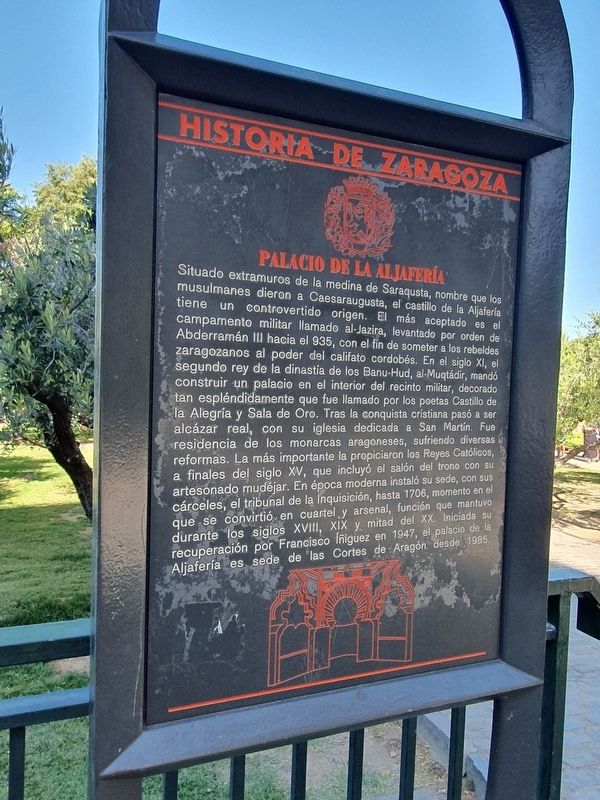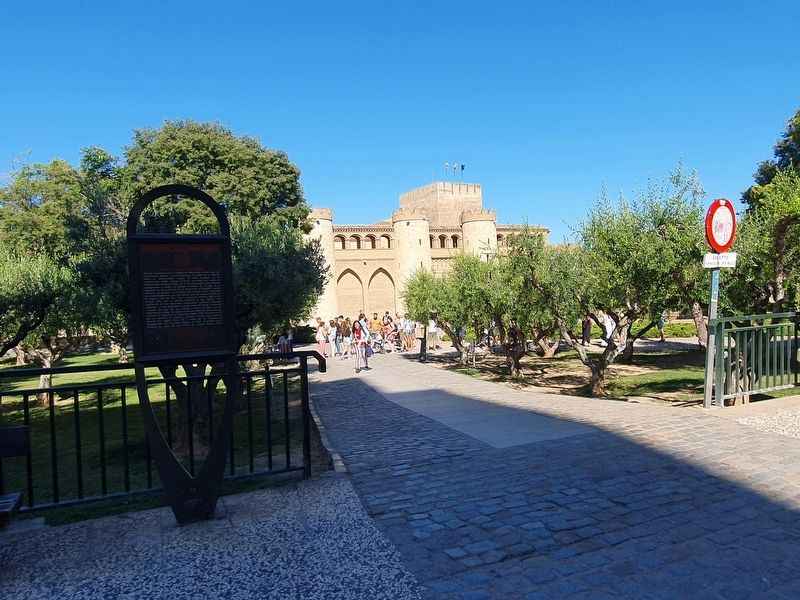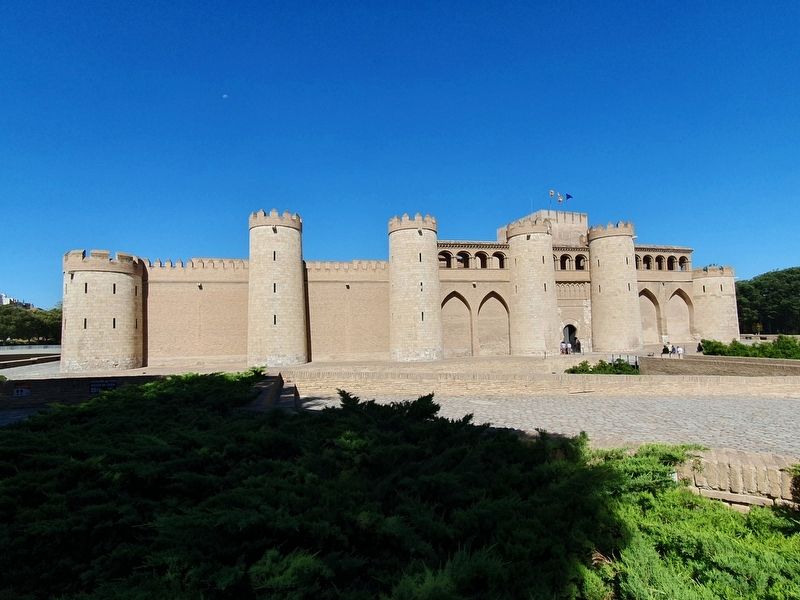La Almozara in Zaragoza, Aragón, Spain — Southwestern Europe (Iberian Peninsula)
Palacio de la Aljafería
Historia de Zaragoza
Situado extramuros de la medina de Saraqusta, nombre que los musulmanes dieron a Caesaraugusta, el castillo de la Aljaferia tiene un controvertido origen. El más aceptado es el campamento militar llamado al-Jazira, levantado por orden de Abderramán Ill hacia el 935, con el fin de someter a los rebeldes zaragozanos al poder del califato cordobés. En el siglo XI, el segundo rey de la dinastía de los Banu-Hud, al-Muqtádir, mandó construir un palacio en el interior del recinto militar, decorado tan espléndidamente que fue llamado por los poetas Castillo de la Alegría y Sala de Oro. Tras la conquista cristiana pasó a ser alcázar real, con su iglesia dedicada a San Martín. Fue residencia de los monarcas aragoneses, sufriendo diversas reformas. La más importante la propiciaron los Reyes Católicos, a finales del siglo XV, que incluyó el salón del trono con su artesonado mudéjar. En época moderna instaló su sede, con sus cárceles, el tribunal de la Inquisición, hasta 1706, momento en el que se convirtió en cuartel y arsenal, función que mantuvo durante los siglos XVIII, XIX y mitad del XX. Iniciada su recuperación por Francisco Iñiguez en 1947, el palacio de la Aljafería es sede de las Cortes de Aragón desde 1985.
Palace of the Aljafería
Located outside the city walls of Saraqusta, the name given by the Muslims to Caesaraugusta, the castle of the Aljafería has a controversial origin. The most widely accepted is that it began as a military camp called al-Jazira, erected by order of Abd al-Rahman Ill around 935, in order to subdue the Zaragozan rebels to the power of the Caliphate of Cordoba. In the eleventh century, the second king of the Banu-Hud dynasty, al-Muqtadir, had a palace built inside the military compound, decorated so splendidly that it was called by the poets the Castle of Joy and the Golden Room. After the Christian conquest, it became a royal fortress, with its church dedicated to San Martín. It was the residence of the Aragonese monarchs, undergoing various reforms. The most important was promoted by the Catholic Monarchs at the end of the 15th century, which included the throne room with its Mudejar coffered ceiling. In modern times, the headquarters of the Tribunal of the Inquisition was set up here with its prisons until 1706, when it became a barracks and arsenal, a function it maintained during the 18th, 19th and mid-20th centuries. Its restoration was begun by Francisco Iñiguez in 1947. The Aljafería Palace has been the seat of the Courts of Aragón since 1985.
Topics. This historical marker is listed in these topic lists: Forts and Castles • Wars, Non-US. A significant historical year for this entry is 1706.
Location. 41° 39.38′ N, 0° 53.731′ W. Marker is in Zaragoza, Aragón. It is in La Almozara. Marker is at the intersection of Calle de los Diputados and Avenida de Madrid, on the right when traveling south on Calle de los Diputados. Touch for map. Marker is at or near this postal address: C de los Diputados 25, Zaragoza, Aragón 50004, Spain. Touch for directions.
Other nearby markers. At least 8 other markers are within walking distance of this marker. La Aljafería (within shouting distance of this marker); Iglesia de Nuestra Señora del Portillo (about 240 meters away, measured in a direct line); Plaza del Portillo Monumento a los Sitios de Zaragoza (approx. 0.3 kilometers away); Plaza del Portillo (approx. 0.3 kilometers away); Calle Ramón Pignatelli, 67 (approx. 0.6 kilometers away); Calle Ramón Pignatelli, 65 (approx. 0.7 kilometers away); Calle Ramón Pignatelli, 63 (approx. 0.7 kilometers away); Calle Ramón Pignatelli, 70 (approx. 0.7 kilometers away). Touch for a list and map of all markers in Zaragoza.
Also see . . . Palace of the Aljafería at Wikipedia. (Submitted on November 22, 2023.)
Credits. This page was last revised on November 22, 2023. It was originally submitted on November 22, 2023, by J. Makali Bruton of Accra, Ghana. This page has been viewed 54 times since then and 9 times this year. Photos: 1, 2, 3. submitted on November 22, 2023, by J. Makali Bruton of Accra, Ghana.


